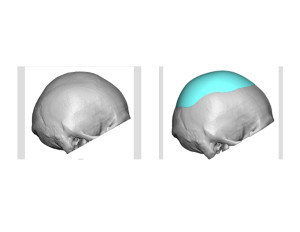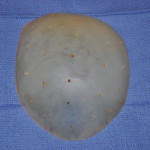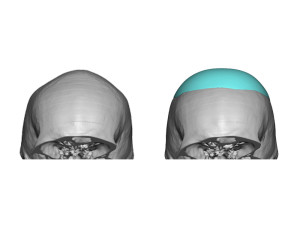Background: The skull is partially created and composed of numerous sutures. During development the skull is composed of six separate cranial bones which are held together by sutures which are made up of fibrous and elastic tissue. These sutures keep the skull bones separate for up to 18 months after birth to allow for brain growth at which point they grew together and remain so through adulthood.
One of these cranial sutures and the only one located directly in the midline is the sagittal suture. It is the suture that connects the two parietal bones. It is the cranial suture that takes the longest to close often not completely so until around thirty years of age. Early closure of this suture in infancy creates the classic scaphocephaly craniosynostosis with severe head shape aberration. But much less severe forms of scaphcephaly do occur and are noted by a prominent sagittal ridge or sagittal crest = from the bregma anteriorly back to the vertex posteriorly. This can be accompanied by a relative parasagittal deficiency which can magnify the appearance of the sagittal crest.
While the sagittal crest can be burred down there are limits as to how much it can be reduced. The thickness of the sagittal crest is often not greater than 6 or 7mms thick before the inner bony table is encountered or breached. In some patients the sagittal crest may be thicker but it is not assured. Thus maximal sagittal crest reduction may not make the top of the head acquire a convex shape, only blunting of sagittal point.



The custom skull implant provides a very effective solution for the sagittal crest skull deformity that has associated parasagittal deficiencies. The thickness of the implant over the sagittal crest only needs to be very thin (1mm) while the parasagittal area is much thicker as it blends to a fine edge into the upper temporal region.
Highlights:
1) The sagittal ridge skull deformity is the result of sagittal suture overgrowth, parasagittal deficiency or a combination of both.
2) Parasagittal augmentation can recontour the top of the head to make it more convex rather than triangular in shape.
3) A custom skull implant offers the most assured method of top of the head reshaping with the smallest incision to do so.
Dr. Barry Eppley
Indianapolis, Indiana




